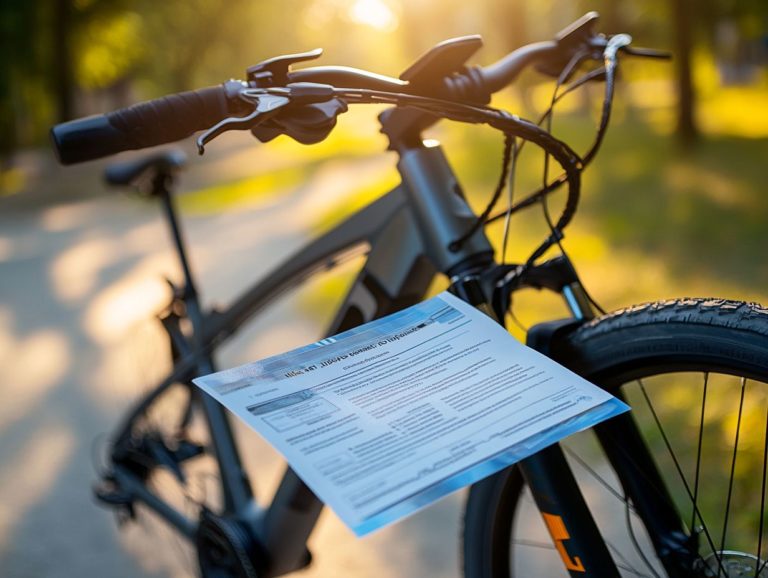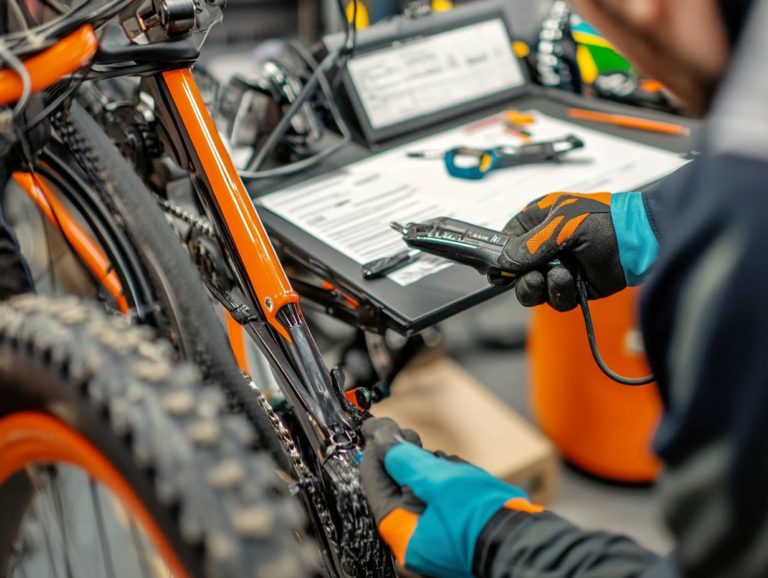Troubleshooting Electric Bicycle Battery Issues
Electric bicycles offer a sleek and eco-friendly mode of transportation, but they can occasionally face battery-related challenges. By familiarizing yourself with these common issues, you can ensure that your rides remain smooth and enjoyable.
Take the time to identify any battery problems, follow essential troubleshooting steps, and adopt preventive measures to extend your battery’s lifespan. Don’t hesitate to seek help when needed, especially if you notice signs of serious battery problems.
Staying informed and prepared will help you maintain your e-bike in peak condition!
Contents
- Key Takeaways:
- Common Electric Bicycle Battery Issues
- Troubleshooting Steps
- Preventive Measures
- When to Seek Professional Help
- Frequently Asked Questions
- How can I tell if my electric bicycle battery is malfunctioning?
- What are some common causes of electric bicycle battery issues?
- How can I troubleshoot my electric bicycle battery at home?
- My electric bicycle battery is not holding a charge, what should I do?
- Can I fix my electric bicycle battery myself?
- How often should I replace my electric bicycle battery?
Key Takeaways:
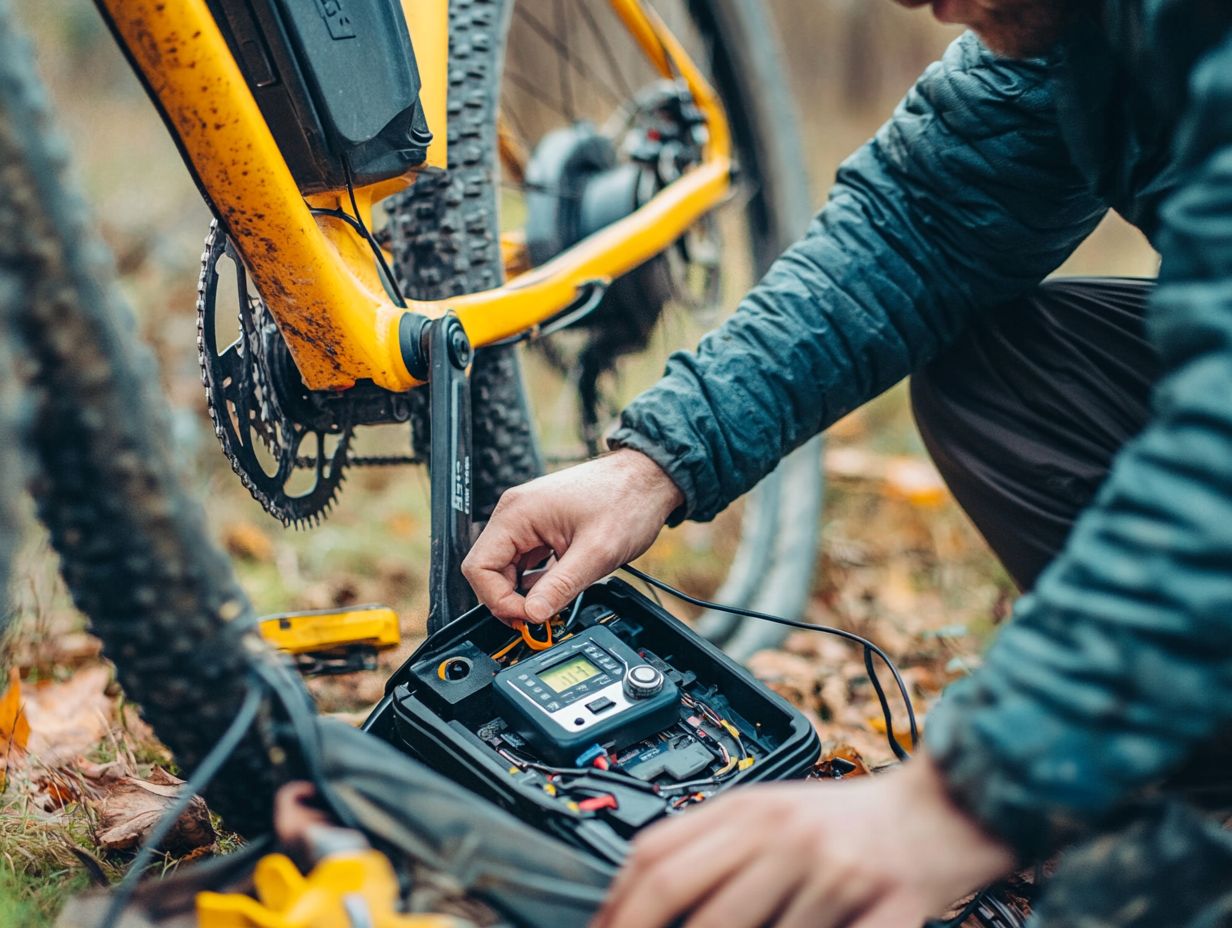
- Identify the problem: Knowing common issues with electric bicycle batteries and being able to spot them early can save you time, money, and frustration in the long run.
- Take preventive measures: Regular maintenance and proper usage of your electric bicycle battery can greatly extend its lifespan and prevent potential issues.
- Know when to seek professional help: If you notice any serious battery problems or are unsure how to troubleshoot, it s best to consult a professional for proper diagnosis and repair.
Common Electric Bicycle Battery Issues
Common electric bicycle battery issues can profoundly affect your e-bike’s performance and longevity. Understanding the various problems that may arise is essential.
From the risks of overcharging to the frustration of a battery that won t charge at all, each issue can lead to diminished battery life and even present safety hazards such as internal damage, fire, or explosion. Managing discharge cycles is crucial for safety.
Whether you own a well-regarded model like the Espin Bikes or the Addmotor EB 2.0, knowing these potential pitfalls is key to ensuring a safe and reliable riding experience.
Identifying the Problem
Identifying battery issues in your e-bike starts with recognizing the signs of malfunction, particularly those related to the system that manages battery life and performance.
When you notice behaviors like your e-bike failing to charge, it’s time to take a closer look at the battery’s health. Checking for unusual voltage readings is equally important, as these can indicate uneven cell discharges that may lead to reduced range or power. Additionally, if you’re experiencing any noise issues, you might want to refer to our guide on fixing common electric bicycle noise problems.
Using a multimeter, a tool for measuring voltage, can greatly assist in this diagnostic journey. Familiarizing yourself with the expected voltage ranges and resistance under various conditions helps you interpret the results accurately. Significant deviations could indicate deeper issues, prompting further investigation or consultation with a professional.
Troubleshooting Steps
Troubleshooting battery issues on your electric bicycle requires a methodical approach that can significantly enhance performance and prolong battery life. Start by checking the charger, verifying voltage levels, and ensuring that the battery pack is operating correctly to prevent common pitfalls such as overcharging or complete discharge.
Regular maintenance of the battery and its components is essential to minimize issues, especially with Lithium batteries, which are commonly found in e-bikes. Incorporate tips for battery maintenance into your routine. By adopting these practices, you can ensure a smoother and more reliable riding experience.
Get your e-bike checked today to enjoy worry-free rides tomorrow!
Step-by-Step Guide to Diagnosing and Fixing Battery Issues
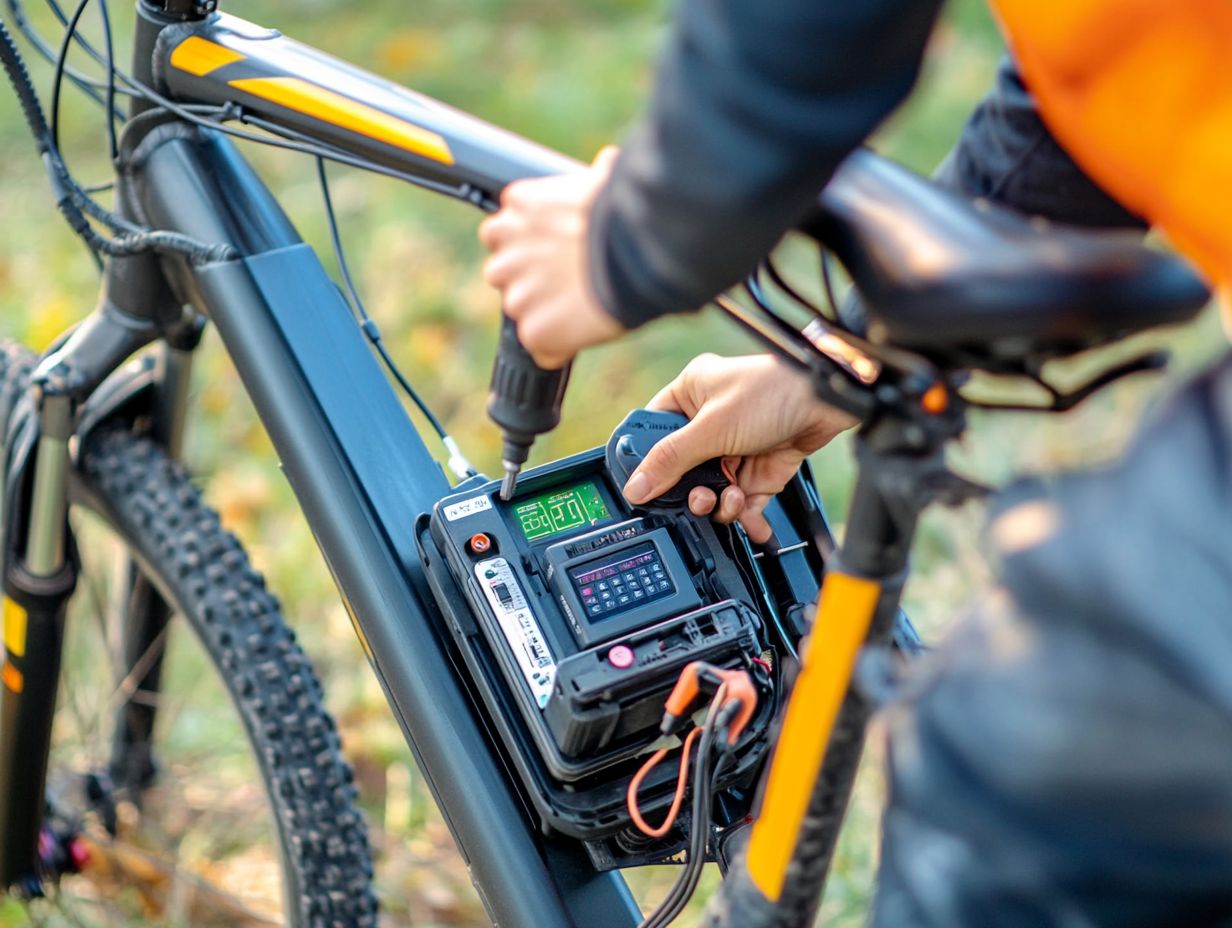
A step-by-step guide to diagnosing and fixing battery issues in your e-bike can enable you to tackle common problems effectively. This can potentially save you time and money on repairs.
Understanding how to diagnose battery complications is vital for any e-bike owner. Start by gathering a multimeter, a tool that tests electrical power; it will help you measure electrical resistance and electrical charge.
Begin your assessment by checking the electrical charge across the battery terminals. If the reading is significantly lower than the rated value, it’s a clear indication that something might be amiss.
Next, inspect the charger s functionality. Ensure it s properly connecting, and that the power indicator lights are operational. Don’t forget to check for physical signs of wear, such as swelling or corrosion.
To prevent future issues, make it a habit to regularly clean the terminals. Keep the battery charged appropriately, and store it in a temperate environment. These maintenance practices will significantly enhance your battery s performance and longevity.
Preventive Measures
Implementing preventive measures is crucial for ensuring the longevity and performance of your electric bicycle battery. By maintaining a full charge and smooth operation, you can significantly enhance your riding experience.
Regular maintenance, including charging techniques and understanding overcharging risks, plays a vital role in maximizing battery life. Additionally, knowing how to troubleshoot electric bicycle throttle issues can help you take these steps to stop problems before they start, ensuring your bike performs at its peak.
Tips for Maintaining Your Electric Bicycle Battery
- Adopt optimal charging habits connect the battery to the charger when it hits around 20% capacity.
- Regularly check the electrical charge levels to ensure they remain within the manufacturer’s recommended limits.
- Confirm that the battery management system (BMS) is functioning properly to regulate charging cycles.
- Be mindful not to let the battery drain completely, as this can lead to permanent damage.
- Also, keep the battery away from extreme temperatures, as such conditions can adversely affect its performance.
When to Seek Professional Help
Recognizing the right moment to seek professional assistance for your electric bicycle battery issues is essential in preventing serious complications. If you experience problems like a battery that s not charging or is fully discharged, act quickly to prevent bigger problems later.
Pay close attention to indicators such as persistent charging difficulties, unusual voltage readings, or any physical damage to the battery. These signs should not be overlooked, as they may indicate underlying problems that necessitate expert intervention.
Take charge of your e-bike’s health today! Follow these tips to keep your rides smooth and safe.
Signs that You Need to Take Your Battery to a Professional
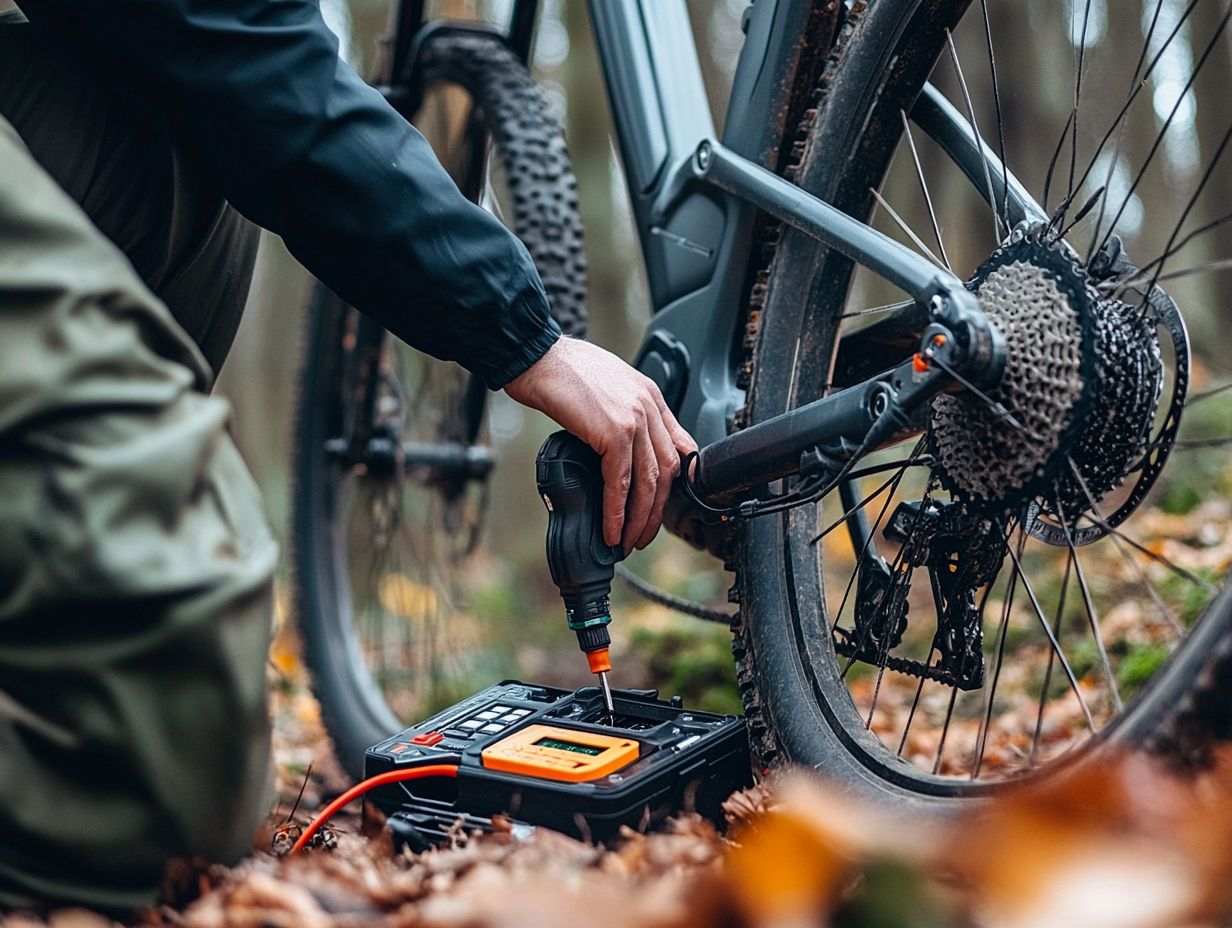
There are several signs that suggest it may be time for you to take your e-bike battery to a professional for a thorough assessment, especially if these symptoms keep cropping up. Always remember that battery maintenance can prevent many issues before they become problematic.
One of the most telling signs is when your battery simply refuses to charge properly. This leaves you with a lifeless battery that won’t charge. You might also notice unusual behaviors, such as overheating or a significant drop in range, which can signal deeper issues lurking beneath the surface. For instance, you can refer to common electric bicycle issues for more insights. Ignoring these issues can lead to serious problems that compromise both your riding experience and your safety.
Getting your battery checked by a pro allows you to address any hidden damage early, preventing costly repairs in the future and extending the lifespan of your e-bike. For more information on maintaining your bike’s electrical system, check out this guide on how to troubleshoot electric bicycle electrical issues, ensuring that your E-Bike remains reliable and safe to ride.
Frequently Asked Questions
How can I tell if my electric bicycle battery is malfunctioning?
Some signs of a malfunctioning electric bicycle battery include a sudden drop in power, a shorter than usual range, and difficulty charging. It’s important to troubleshoot and fix the problem quickly.
What are some common causes of electric bicycle battery issues?
Common reasons for battery problems include overcharging, extreme temperatures, damage to the battery or wiring, and old age. Identifying the cause of the issue is key in finding a solution, especially regarding battery maintenance.
How can I troubleshoot my electric bicycle battery at home?
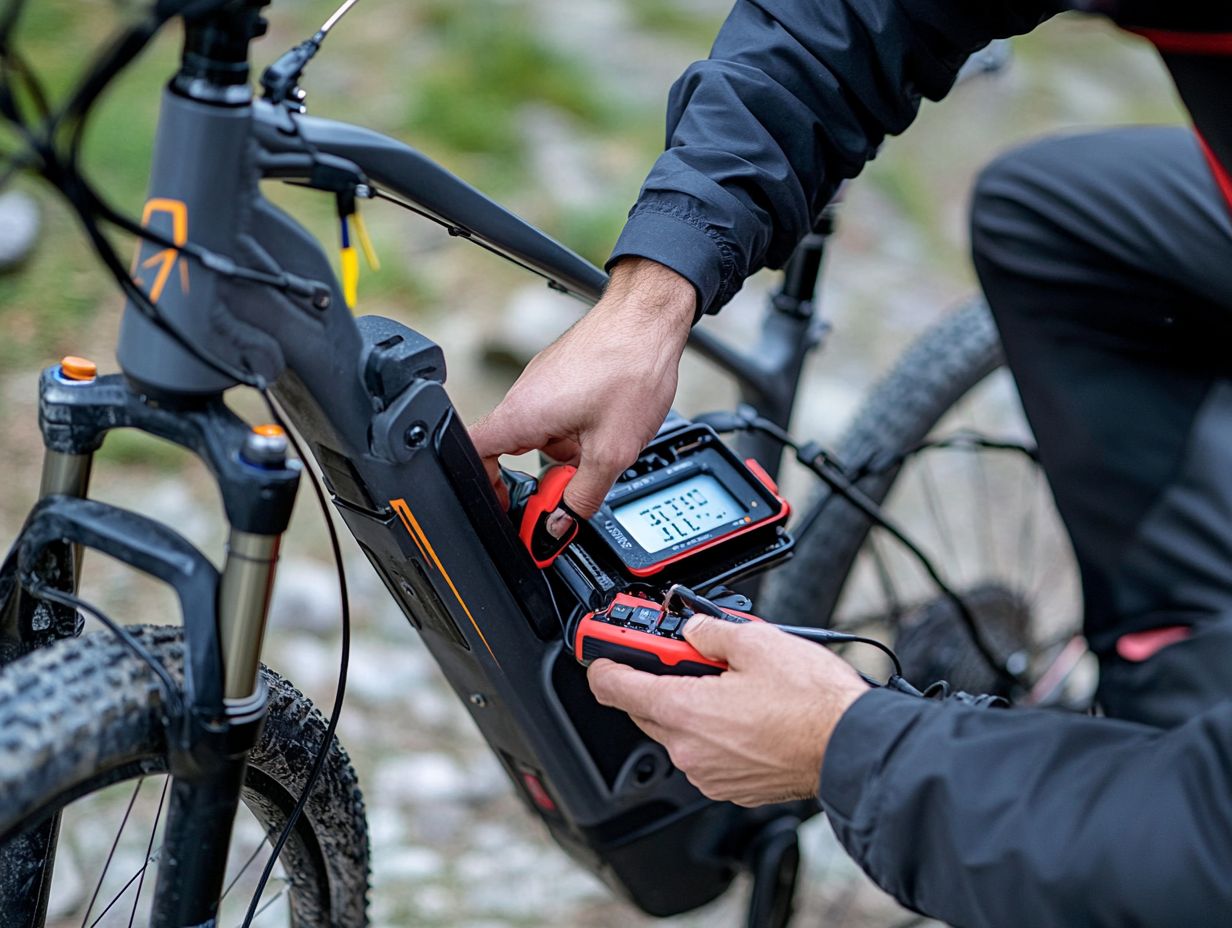
Before bringing your electric bicycle to a professional for repairs, there are a few steps you can take to troubleshoot at home. These include checking the connections and wires, testing the charger, and inspecting the battery for any visible damage.
My electric bicycle battery is not holding a charge, what should I do?
If your battery is not holding a charge, there may be an issue with the battery itself. Try cleaning the contacts and testing the charger, but if the issue persists, it may be time to replace the battery.
Can I fix my electric bicycle battery myself?
While some minor issues can be fixed at home, it is generally not recommended to attempt to fix electric bicycle batteries yourself. These batteries can be dangerous if mishandled, especially concerning lithium types, and it is best to seek professional help for any major issues.
How often should I replace my electric bicycle battery?
The lifespan of an electric bicycle battery can vary depending on usage and care, but on average, they should be replaced every 2-3 years. Keep a close eye on your battery’s health to avoid surprises. For instance, manufacturers like Espin Bikes and Addmotor EB 2.0 provide recommendations on battery maintenance.


